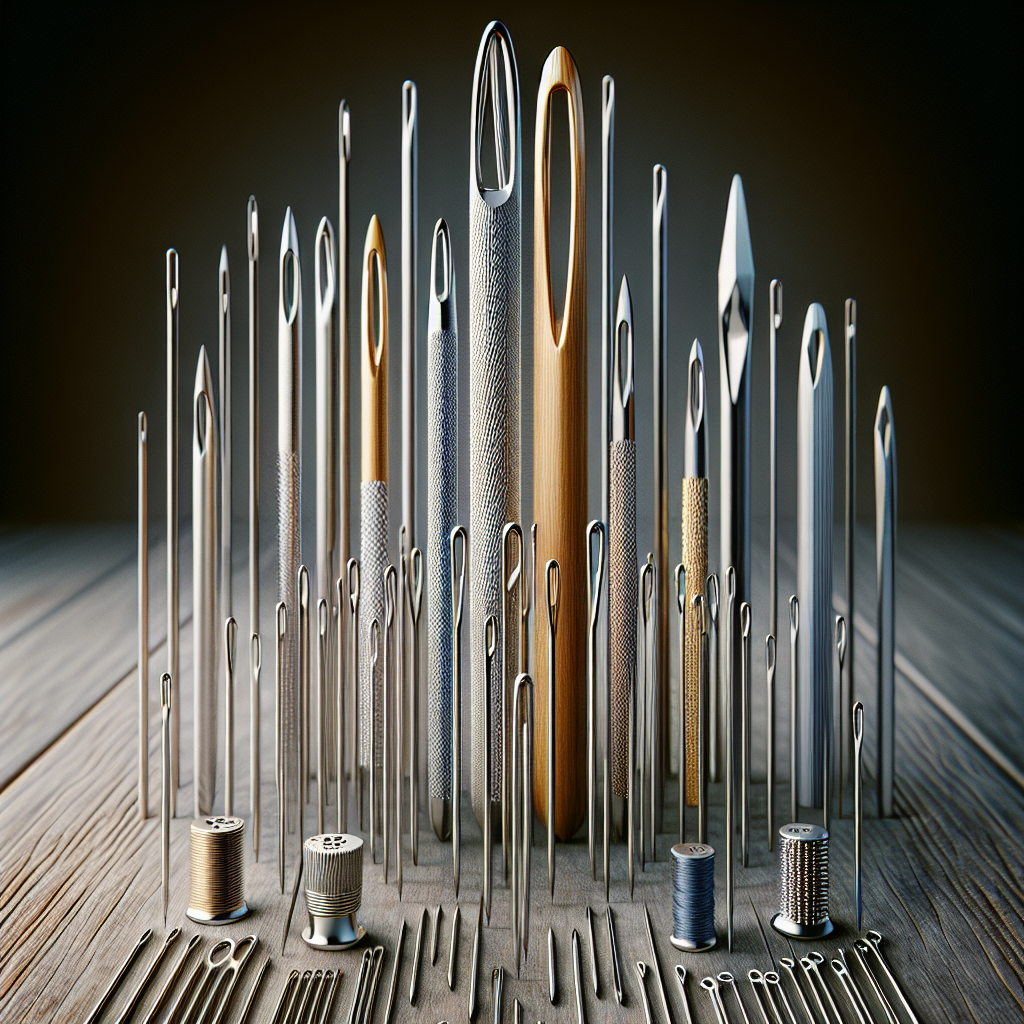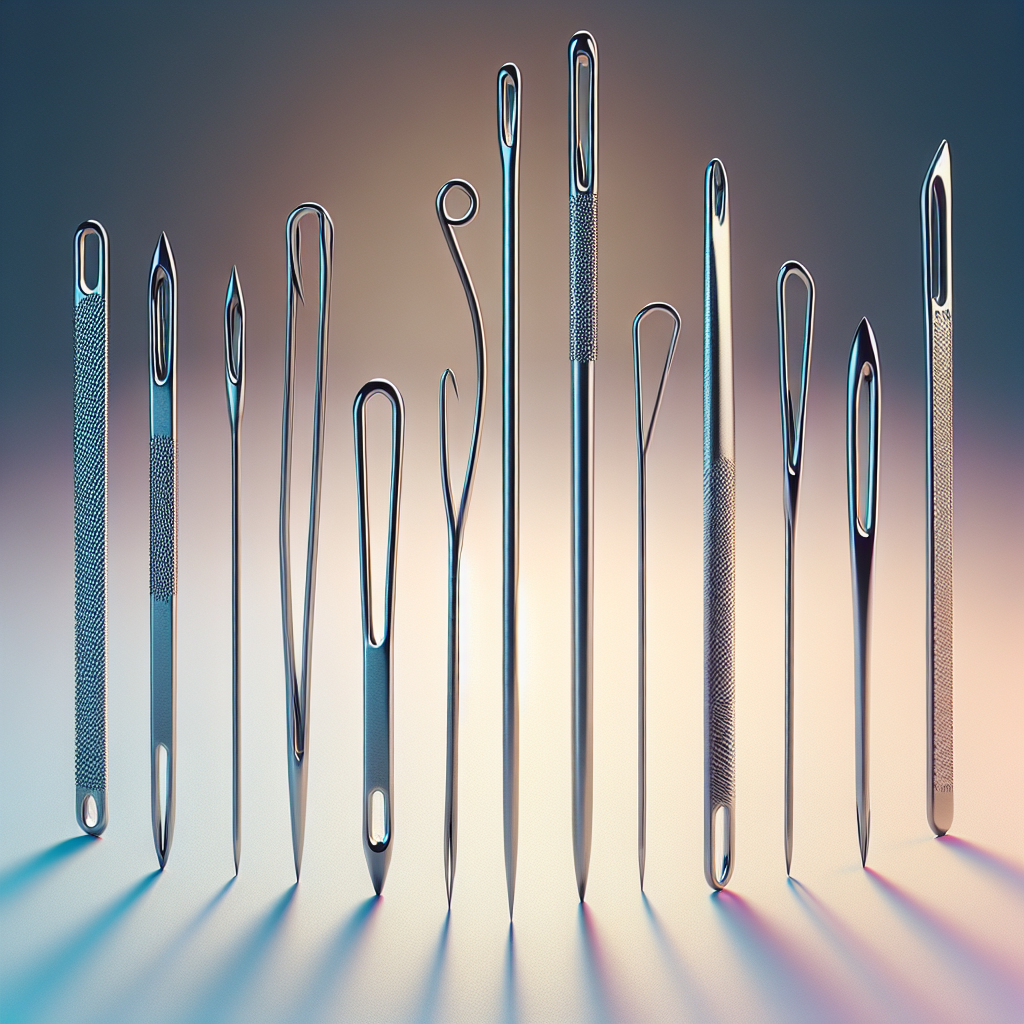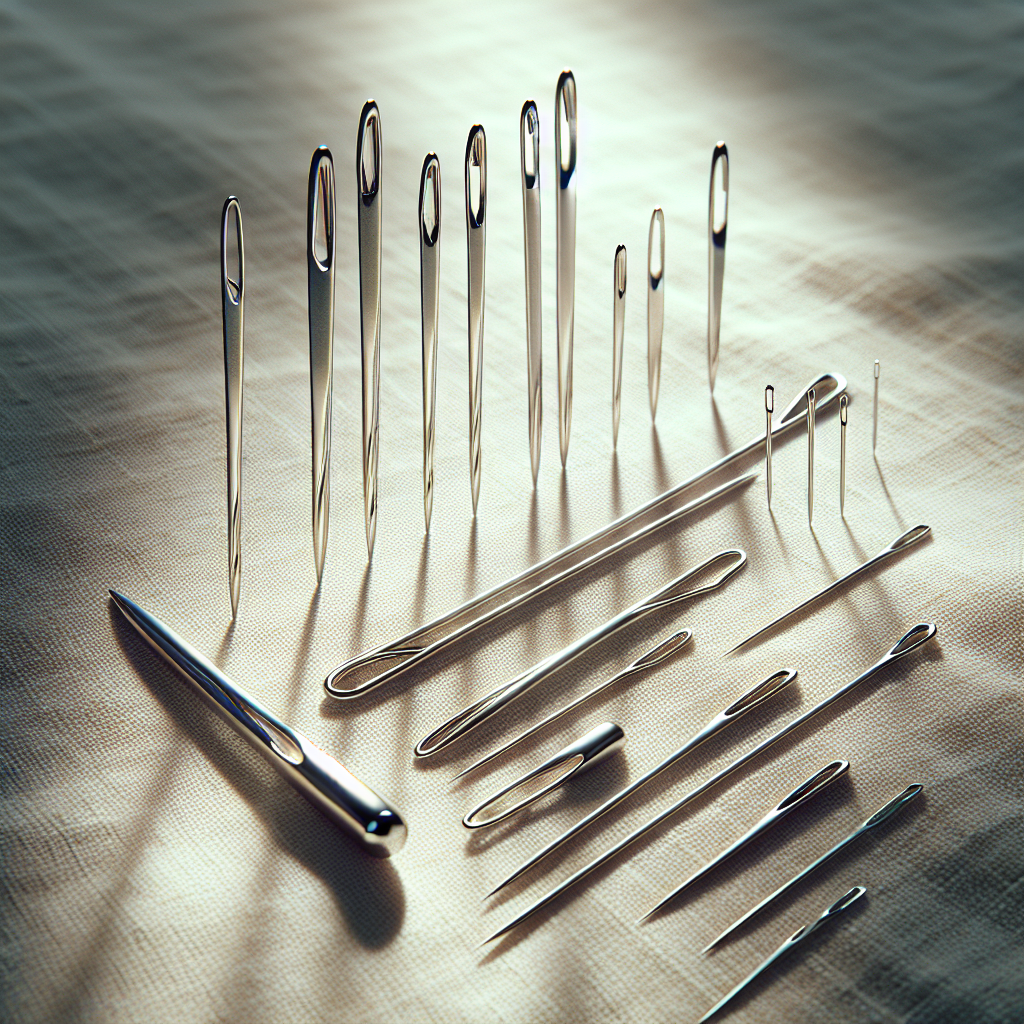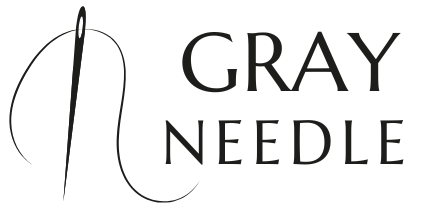When embarking on any sewing project, understanding the variety of sewing needles available is crucial. Each needle type serves a specific purpose, which can significantly affect the outcome of your work. Here’s a breakdown of the most common types:
- Universal Needles: These are versatile and suitable for most woven and knit fabrics, making them a reliable choice for everyday sewing.
- Ballpoint Needles: Designed with a rounded tip, ballpoint needles are ideal for sewing knits and stretch fabrics, as they slide between the fibers rather than piercing them.
- Sharps Needles: With a thin, sharp point, these needles are perfect for delicate fabrics like silk and microfibers, allowing for precise stitching.
- Quilting Needles: Specifically designed for quilting, these needles have a tapered point that easily penetrates multiple layers of fabric.
- Jeans/Denim Needles: Featuring a strong, thick shaft and a sharp point, these needles are engineered to sew through heavy fabrics like denim and canvas.
Choosing the correct needle type not only enhances your sewing experience but also ensures that your projects turn out beautifully. To dive deeper into the ins and outs of sewing needles and to elevate your sewing skills, visit our website to learn more and get started today! Click here.
Factors to Consider When Selecting a Needle

When it comes to selecting the right sewing needle, there are several critical factors to consider that can influence both the ease of sewing and the quality of your finished project. Here are some key points to keep in mind:
- Fabric Type: The kind of fabric you’re working with is fundamental in determining the needle you should use. Heavier fabrics like denim require strong needles, while lighter fabrics like silk need finer needles.
- Thread Thickness: The thickness of the thread you choose should match the needle size. A thicker thread pairs well with a larger needle, ensuring smooth stitching without damaging the fabric.
- Sewing Technique: The technique you plan to use, such as quilting or embroidery, may necessitate specific needle types designed for those techniques, impacting your overall project outcome.
- Needle Size: Needle sizes are indicated by numbers; smaller numbers correspond to finer needles, while larger numbers indicate thicker ones. Choose the size that complements your fabric and thread.
- Project Requirements: Consider the demands of your project. For example, if you need to sew multiple layers, a needle designed for that purpose will save you time and effort.
By taking these factors into account, you can ensure that you select the most suitable needle for your sewing project, enhancing both your experience and the quality of your work.
Matching Needle Size with Fabric Type
Understanding the relationship between needle size and fabric type is crucial for achieving professional results in your sewing projects. Using the right needle size for your fabric can significantly affect the stitch quality and overall finish of your work. Here’s a breakdown of how to match needle sizes with various fabric types:
- Lightweight Fabrics: For delicate materials such as chiffon, silk, or lightweight cotton, use a size 60/8 or 70/10 needle. These finer needles help prevent snagging or damaging the fabric.
- Medium Weight Fabrics: Fabrics like quilting cotton or linen typically require a size 80/12 needle. This size provides a good balance, allowing for smooth stitching without overwhelming the fabric.
- Heavyweight Fabrics: When working with heavier materials such as denim, canvas, or upholstery fabrics, opt for a size 90/14 or 100/16 needle. These larger needles are designed to penetrate thick layers without bending or breaking.
- Knits and Stretch Fabrics: For knit fabrics, a ballpoint needle in sizes 70/10 to 90/14 is recommended. The rounded tip helps to slide between the fibers rather than piercing them, preventing runs or snags.
By carefully matching your needle size with your fabric type, you can enhance the quality of your stitches and ensure a smoother sewing experience. This attention to detail not only saves time but also elevates the overall appearance of your finished project.
Exploring Specialty Needles for Unique Projects

When tackling unique sewing projects, utilizing specialty needles can unlock new possibilities and enhance the quality of your work. These needles are designed to address specific sewing challenges and materials, making them indispensable tools for any sewing enthusiast. Here’s a look at some popular types of specialty needles and their uses:
- Quilting Needles: These needles feature a tapered point that allows them to easily penetrate multiple layers of fabric, making them ideal for quilting projects. Sizes 75/11 to 90/14 are commonly recommended.
- Embroidery Needles: Designed specifically for machine embroidery, these needles have a larger eye to accommodate thicker embroidery threads. They typically come in sizes 75/11 to 90/14 and help to create beautiful designs without fraying the thread.
- Jeans/Denim Needles: Featuring a strong, thick shaft and a sharp, tapered point, these needles can handle the tough layers of denim and other heavy fabrics. Sizes 90/14 to 110/18 are often suggested for best results.
- Leather Needles: With a wedge-shaped point, leather needles are designed to sew through leather without tearing it. They come in sizes 80/12 to 100/16 and are essential for any leather crafting project.
- Twin Needles: These needles have two needles attached to a single shaft, allowing you to create parallel rows of stitching or decorative effects. They are available in various sizes and spacings, making them versatile for different projects.
Exploring these specialty needles can not only improve the quality of your sewing but also inspire creativity in your projects. Whether you’re quilting, embroidering, or working with challenging materials like leather, the right needle can make all the difference in achieving professional-looking results.
How to Maintain Your Sewing Needles

To ensure your sewing needles perform at their best, proper maintenance is essential. Just like any other tool, needles require care to prolong their lifespan and maintain their effectiveness. Here are some important tips for maintaining your sewing needles:
- Regular Inspection: Frequently check your needles for any signs of wear, such as bending, dullness, or tiny burrs. A damaged needle can lead to uneven stitching and fabric damage.
- Keep Needles Clean: Dust and fabric lint can accumulate on your needles, affecting their performance. Use a soft cloth or a small brush to gently clean the needle after each sewing session.
- Store Needles Properly: To prevent bending or breaking, store your needles in a dedicated case or a magnetic strip. Keeping needles organized not only protects them but also makes it easier to find the right type when you need it.
- Change Needles Regularly: It’s recommended to change your sewing needle every 6-8 hours of sewing or sooner if you notice any issues. Using a fresh needle improves the quality of your stitching and reduces the risk of fabric damage.
- Use the Right Needle for the Fabric: Always match your needle type and size to the fabric you’re working with. Using the wrong needle can cause unnecessary wear and tear on both the needle and the fabric.
By following these simple maintenance tips, you can extend the life of your sewing needles and ensure they continue to perform optimally for all your sewing projects. Taking good care of your tools will ultimately enhance your sewing experience and the quality of your finished work.
Common Mistakes to Avoid When Choosing Needles

Choosing the right sewing needle is crucial for successful sewing projects, but several common mistakes can hinder your progress. Being aware of these pitfalls can save you time, frustration, and fabric waste. Here are some common mistakes to avoid when choosing needles:
- Ignoring Needle Size: Using the wrong needle size for your fabric can lead to skipped stitches or fabric damage. Always check the thickness of the fabric and select a needle size that matches it.
- Not Considering Needle Type: Each needle type serves a specific purpose. For instance, using a universal needle for stretch fabrics can cause issues. Familiarize yourself with different needle types, such as ballpoint, quilting, or denim needles, and choose accordingly.
- Assuming Needles Are One-Size-Fits-All: Not all sewing projects require the same needle. Switching between different fabric types or sewing techniques may necessitate a change in needle. Be flexible and adapt your needle choice to your project.
- Overusing Needles: Some sewists tend to use the same needle for multiple projects, leading to wear and tear. Remember that needles lose their sharpness over time, which affects stitching quality. Regularly replace your needles to ensure optimal performance.
- Neglecting to Read the Packaging: Needle packaging often contains valuable information about the needle’s intended use, size, and type. Failing to read this can lead to poor choices. Always take a moment to familiarize yourself with the details before purchasing.
Avoiding these common mistakes can significantly enhance your sewing experience and help you achieve more professional results. Visit our website to learn more and get started today! Click here.

